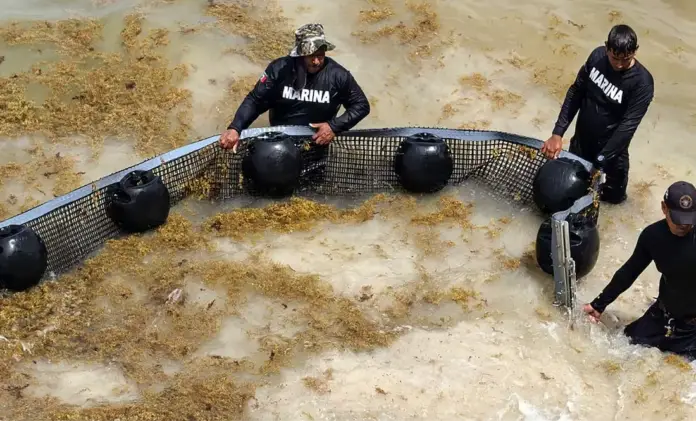Rising ocean temperatures around the world, thermal anomalies recorded in the Mexican Caribbean, and the arrival of summer—the season of peak sargassum stranding in the region—have triggered a surge in the presence of the macroalgae on the coasts of Cancún, northern Puerto Morelos, Playa del Carmen, Tulum, and a stretch from Mahahual to Xcalak, in southern Quintana Roo.
The volumes are so intense that the sargassum decomposes and produces the so-called brown tide, which dyes not only the shoreline but also the seawater ochre.
The sargassum floats in the water and is carried by the current and waves, acquiring a “chocolatey” color toward the beaches, as observed on a tour of the beaches of Playa del Carmen, one of the most problematic spots in the northern part of the state.
Tons of sargassum collected
The Secretary of Environment and Climate Change of Playa del Carmen, Samantha Álvarez, reported that, together with the Secretary of the Navy (Semar), an average of 8,000 tons of sargassum have been collected from March to date.
The official indicated that the arrival of southeasterly winds has intensified the occurrence of the macroalgae in areas such as El Recodo—located as a “red spot” for frequent occurrences—and Punta Esmeralda Beach.

Source: eluniversal




